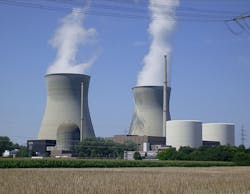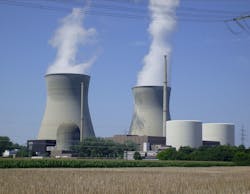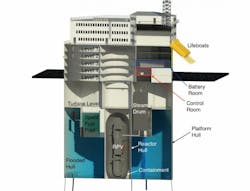Nuclear power presents a conundrum to many environmentalists. It’s practically the only way to supply the U.S. (or the world) with large, industrial amounts of electricity without pumping more CO2 into the atmosphere. But many people (NIMBYs) strongly resist having a nuclear plant built near them for fear of radiation or meltdowns.
One possible solution being put forth by an engineering team at the Massachusetts Institute of Technology envisions large-scale nuclear plants mounted on floating platforms, much like today’s deep-sea drilling platforms, and anchoring them about 10 miles off shore. This makes engineering sense to me on several levels.
It combines proven technologies and each has its own industrial base: deep-sea platforms and nuclear plants.The MIT plan estimates a 300 MW plant would have a cylindrical main structure about 140 ft. in diameter. A 1,100 MW plant would have a 240-ft. diameter.
There might be challenges in building an underwater transmission line that could handle all that power, but it should be possible. (Or they could use all that electricity to extract hydrogen from seawater.) And plant technicians and engineers would have to live and work at sea for a few months at a time, but oil and gas workers do it, as well as sailors.
I would, however, like the team to run the numbers to see what kind of output they could get from an even cleaner and safer thorium plant.
About the Author
Stephen Mraz Blog
Senior Editor
Steve serves as Senior Editor of Machine Design. He has 23 years of service and has a B.S. Biomedical Engineering from CWRU. Steve was a E-2C Hawkeye Naval Flight Officer in the U.S. Navy. He is currently responsible for areas such as aerospace, defense, and medical.


